Exploring central Kyoto on foot and in the kitchen
For many, an ideal visit to Kyoto is at least a week-long affair, a whirlwind of temples and shrines scattered across four corners of the city. With endless fascinating sites and a wealth of history to explore, it's no surprise people want to fit in as much as they can.
But anyone who has visited this bustling city quickly learns that trying to do it all can be exhausting. Especially for those short on time, negotiating the city's byzantine bus and train networks to visit Kyoto's iconic "top" spots can be difficult, time-consuming or sometimes just impossible.
Sometimes, having a limited focus can help make traveling easier. To help out travelers looking for a simpler - yet satisfying - experience in Kyoto, I set out to find a handful of interesting sites to explore in a limited area, all within a reasonable walking distance of Kyoto's main point of entry for almost all visitors: Kyoto Station. My goal: staying on foot while still getting a good taste of the city's history and local charm.
To make my trip even more locally focused, I booked a particularly unique accommodation for my night's stay: one night at APARTMENT HOTEL MIMARU. My goal here: make use of the hotel's in-room kitchen and convenient location to prepare my own dinner using local ingredients from a local market.
Day 1
Kyoto Station
I began my brief Kyoto sojourn like so most visitors to the city at Kyoto Station. On a visit of any length, this train station's jaw-dropping modern architecture makes it a worthwhile destination in itself. Though it's easy to lose yourself exploring its cavernous open spaces, labyrinthine passageways and array of restaurants and shops, just spending half an hour taking in the grand scale of the station's design while riding up and down the escalators is a perfect way to start any Kyoto trip.
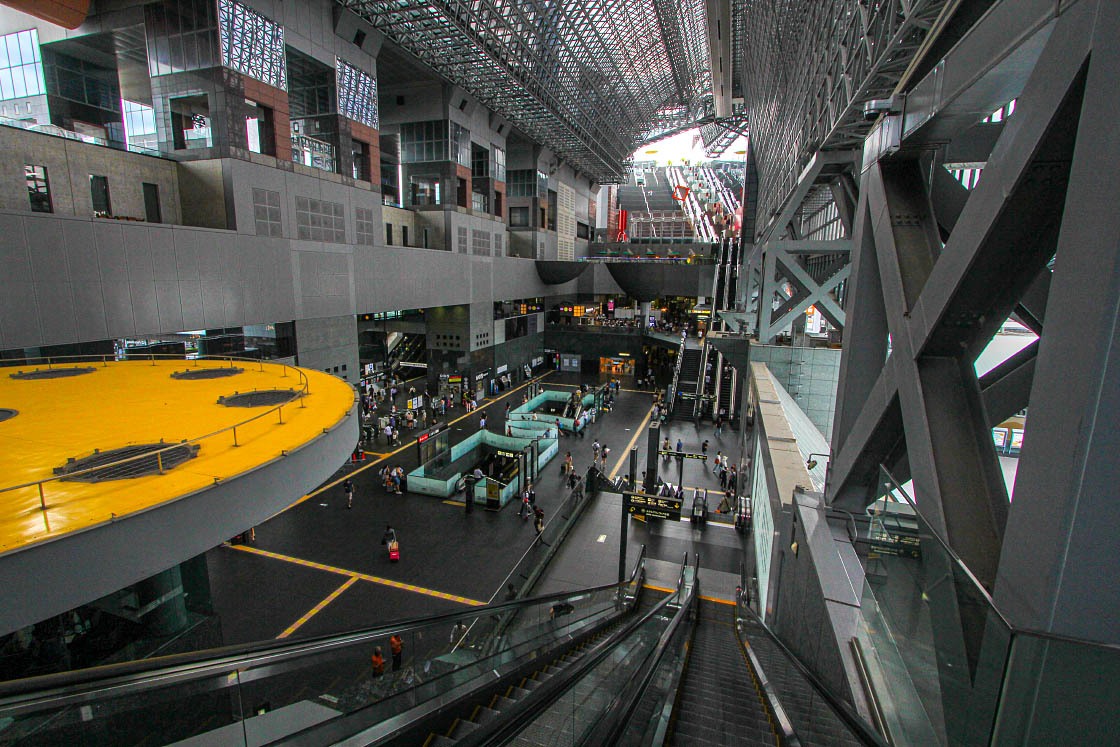

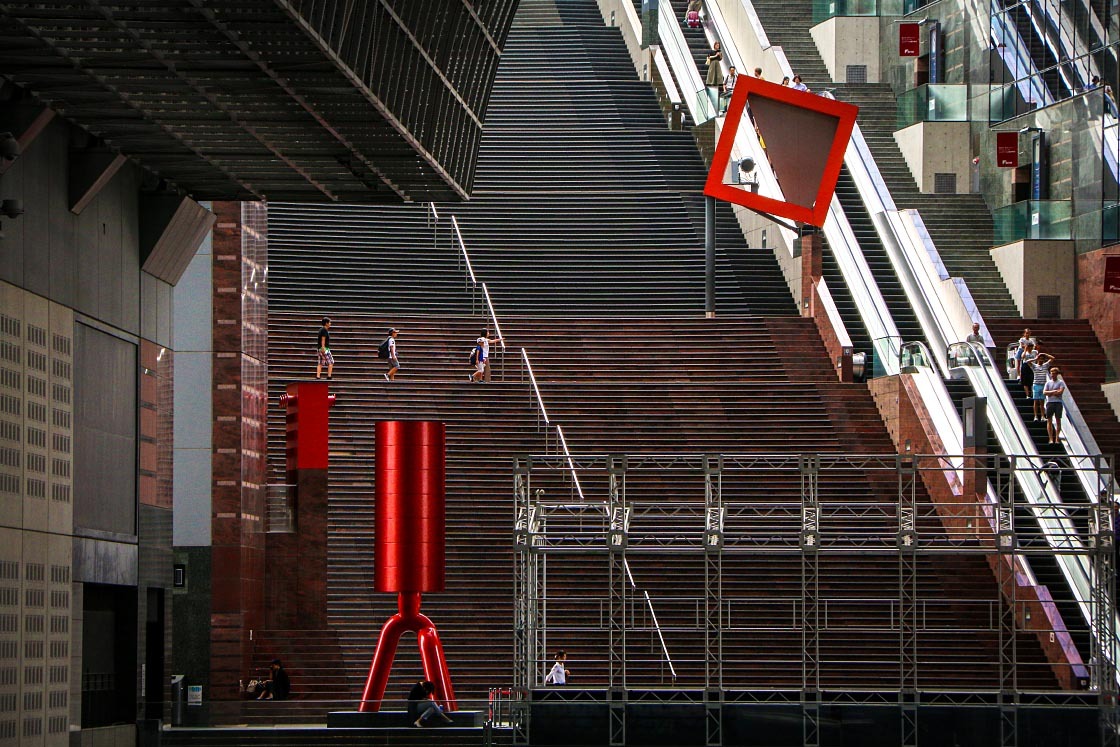
After walking around marveling at Kyoto Station's grandeur, I headed due north out the central main gate and into the bright summer sun on foot, immediately passing by the iconic Kyoto Tower.
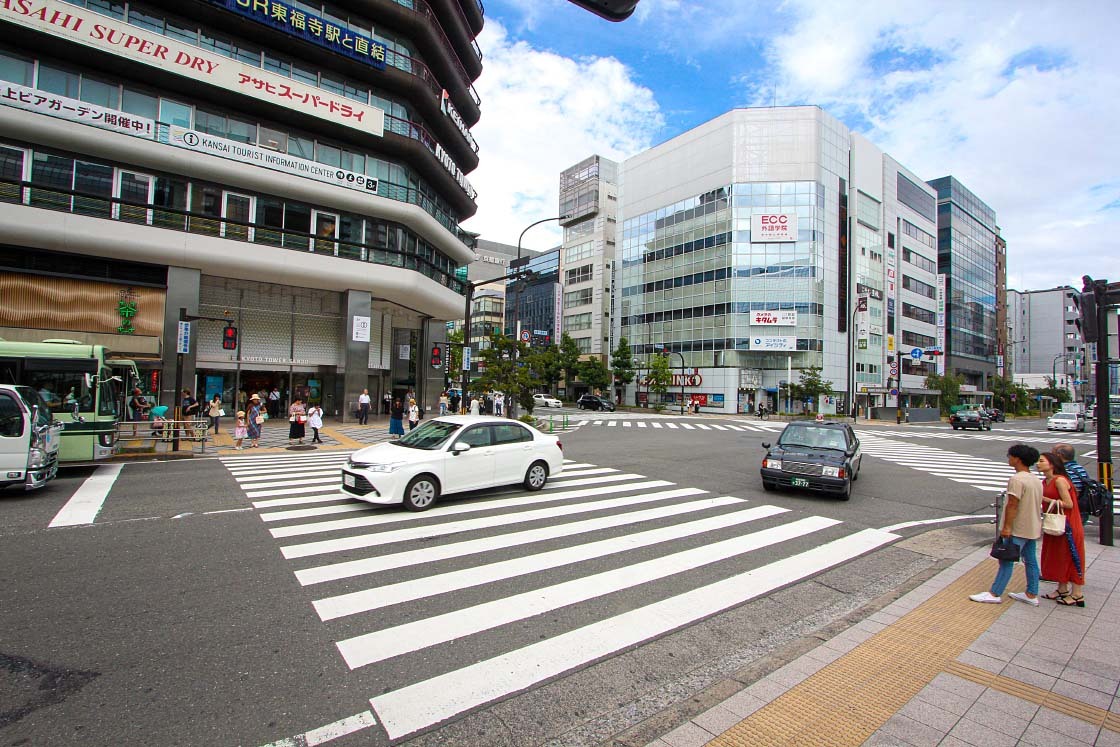
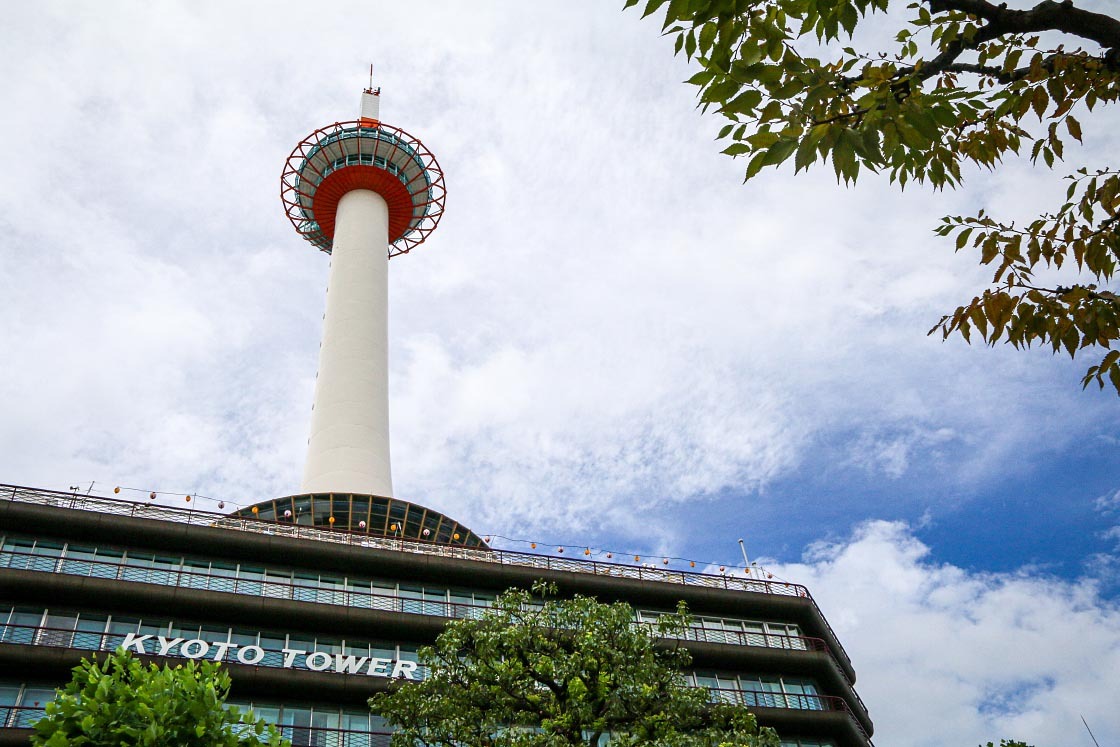
Higashi-Honganji Temple
Simply heading north up the central Karasuma-dori Street from the station, a 5-minute walk led me to the unmissable Higashi-Honganji Temple. Despite its grand size and the thousands of visitors that walk by this massive temple each day, being relatively less famous (compared to Kyoto's top-visited sites) often leaves it only passed by.
But just taking 30-60 minutes to try and appreciate this place, I was surprised at what I'd been missing. Once I actually stepped beyond its outer gate, the huge size of the Goeido (Founder's Hall) building - the largest wooden structure in all of Kyoto - really made its mark.
Stepping into the interiors of the temple's halls, the enormous fully gilded altars and intricate decorations were a truly incredible site.

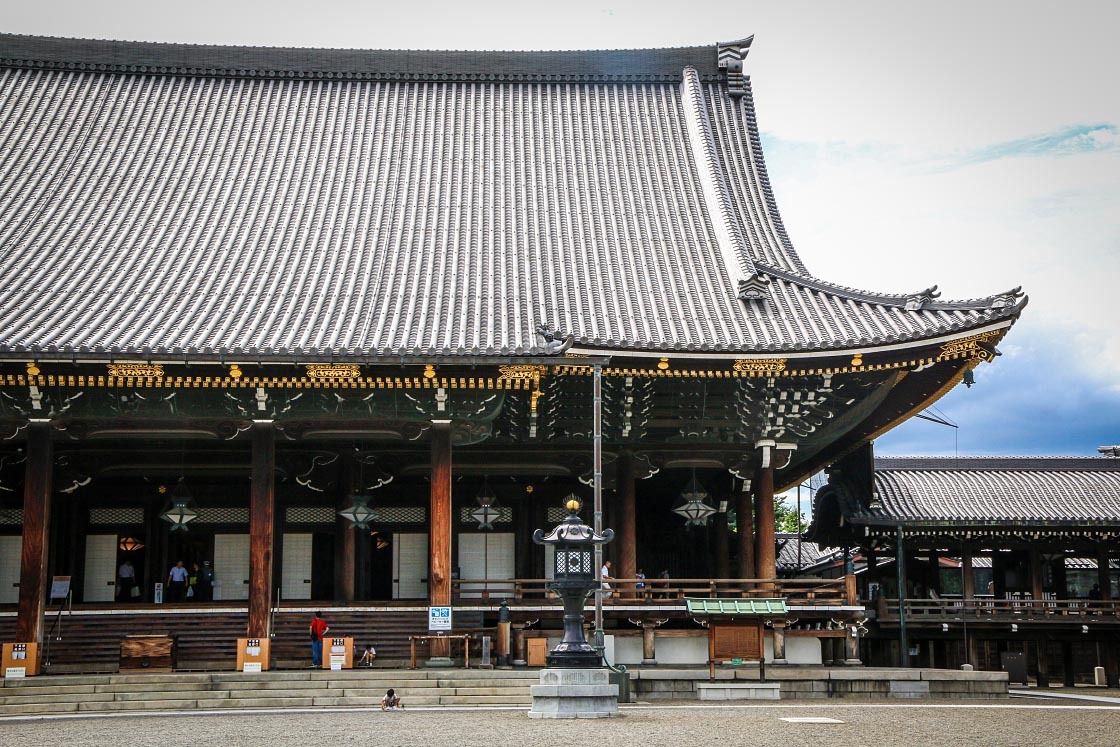

Across the street from Higashi-Honganji, just a few blocks to the east, I walked to another beautiful but often-overlooked site: Shoseien Garden. I was surprised to find that this small, quiet garden, which serves as a detached residence for Higashi-Honganji, felt almost empty compared to the bustle of nearby Kyoto Station.
The garden's paths circle a pretty central pond which was covered in lotus plants when I was there. A handful of tiny tea houses and softly arched bridges amongst the lush summer green lent a peaceful respite to the city's constant crowds.


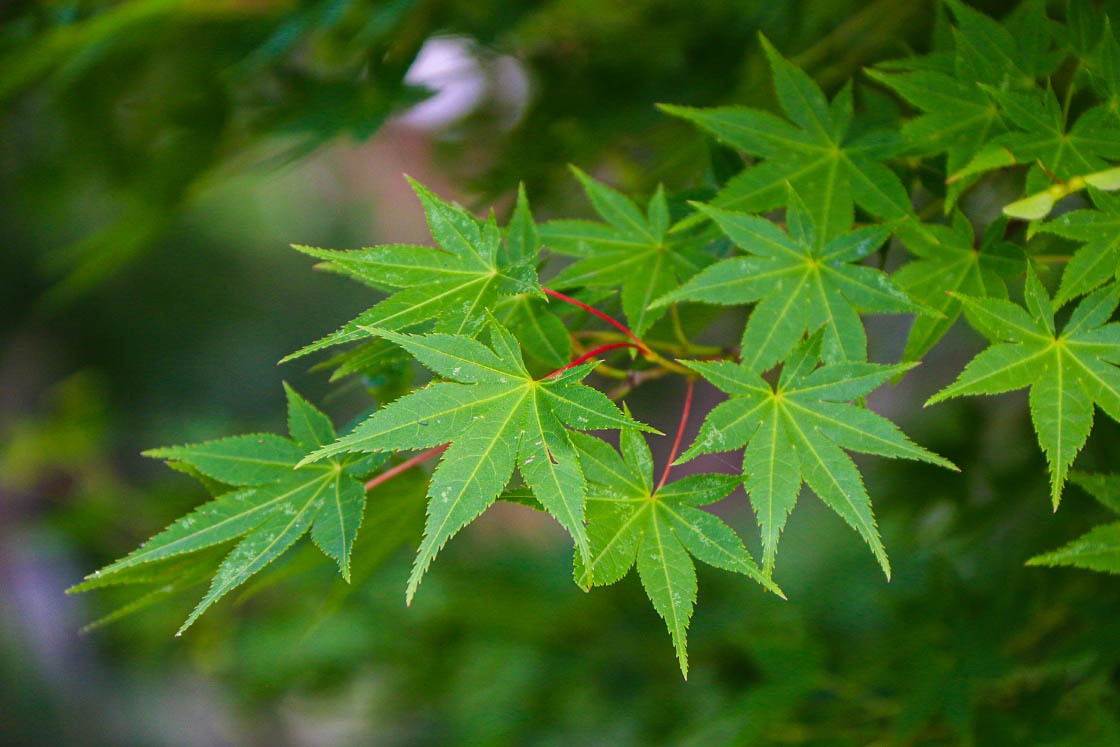
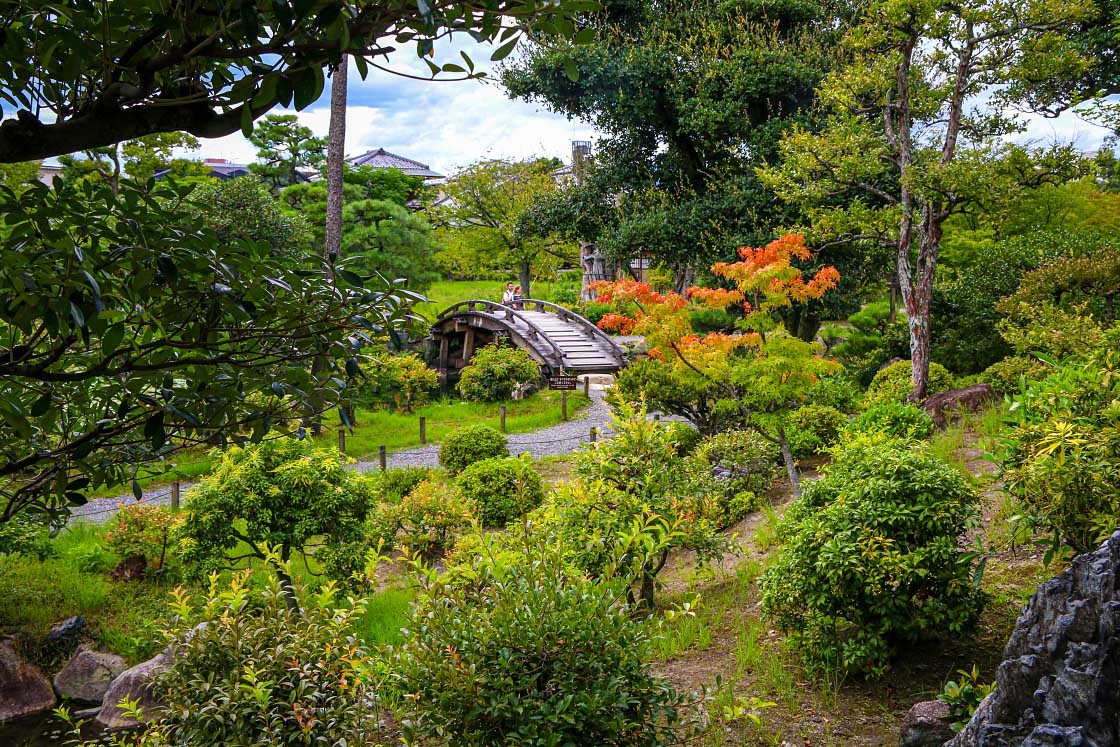
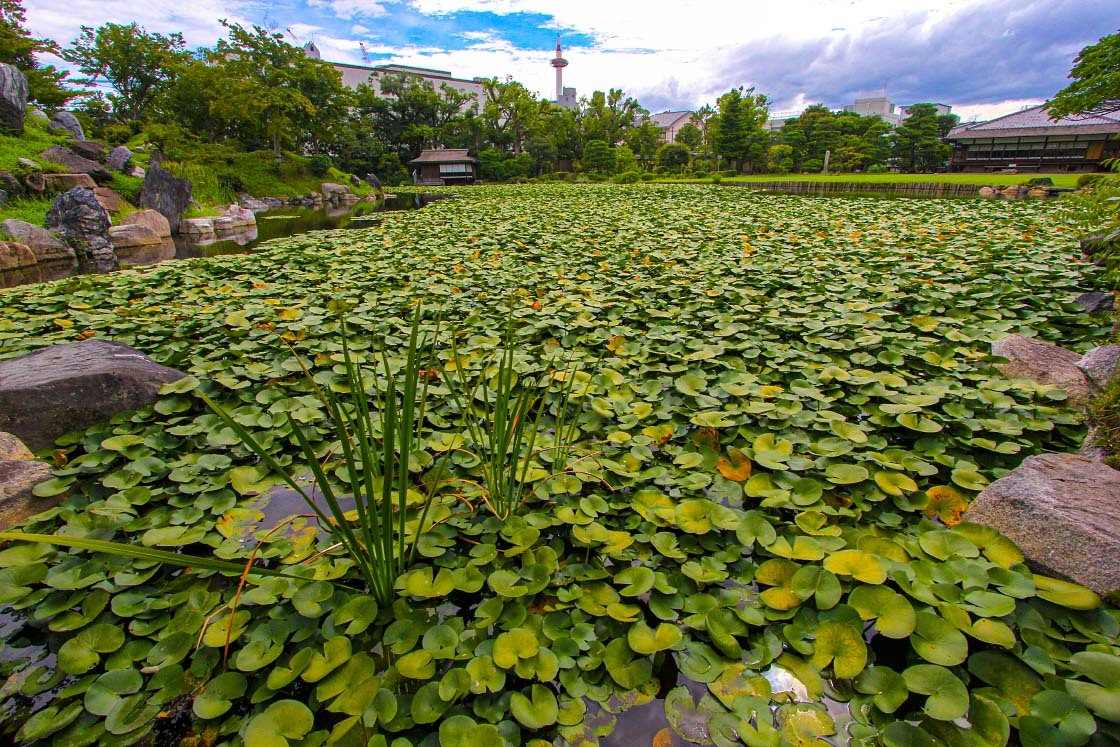
Nishiki Market
After walking around in the sun I was ready to cool off a bit. Heading north, it was about a 15-minute walk to Nishiki Market. This bustling covered shopping street is a unique way to experience a slice of life in Kyoto. Selling everything from fresh seafood and locally sourced vegetables to knives and cookware, vendors have been setting up shop on this street for over 700 years and continue the tradition today.
Besides taking in the lively atmosphere, it was clear this would be the perfect place to pick up fresh ingredients for my home-cooked dinner for the night. After some browsing, I decided the hot summer weather called for something seasonally appropriate: a summer vegetable pasta featuring local Kyoto Manganji peppers, shrimp, and other local vegetables.

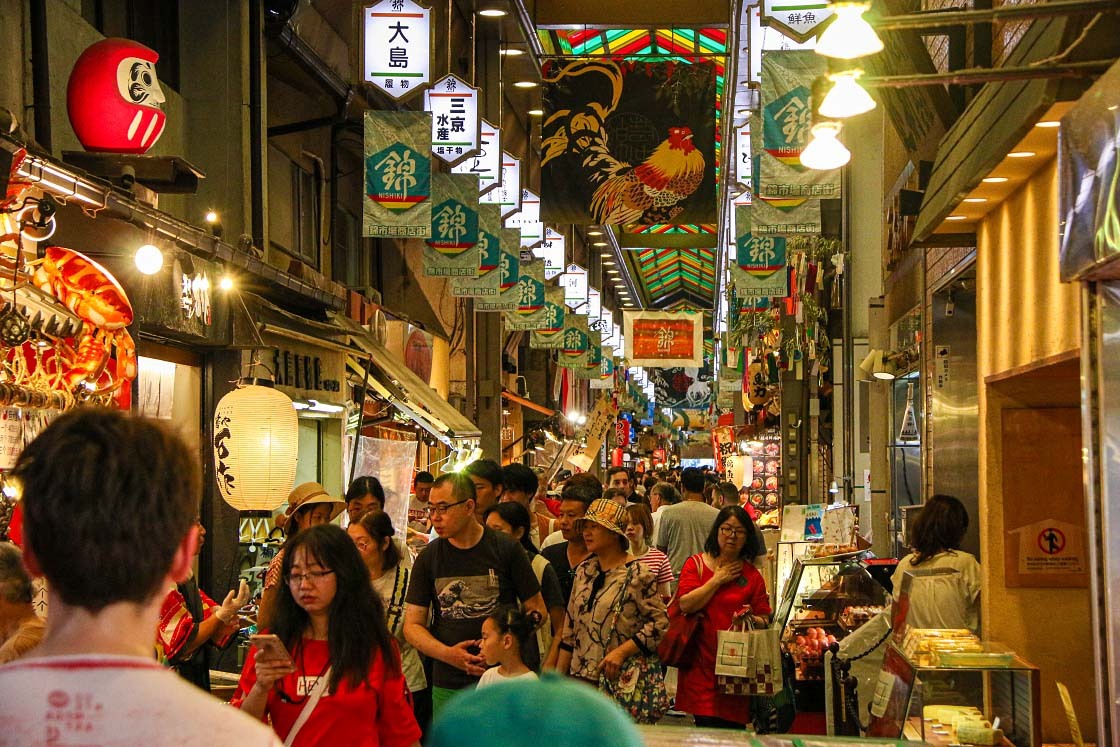

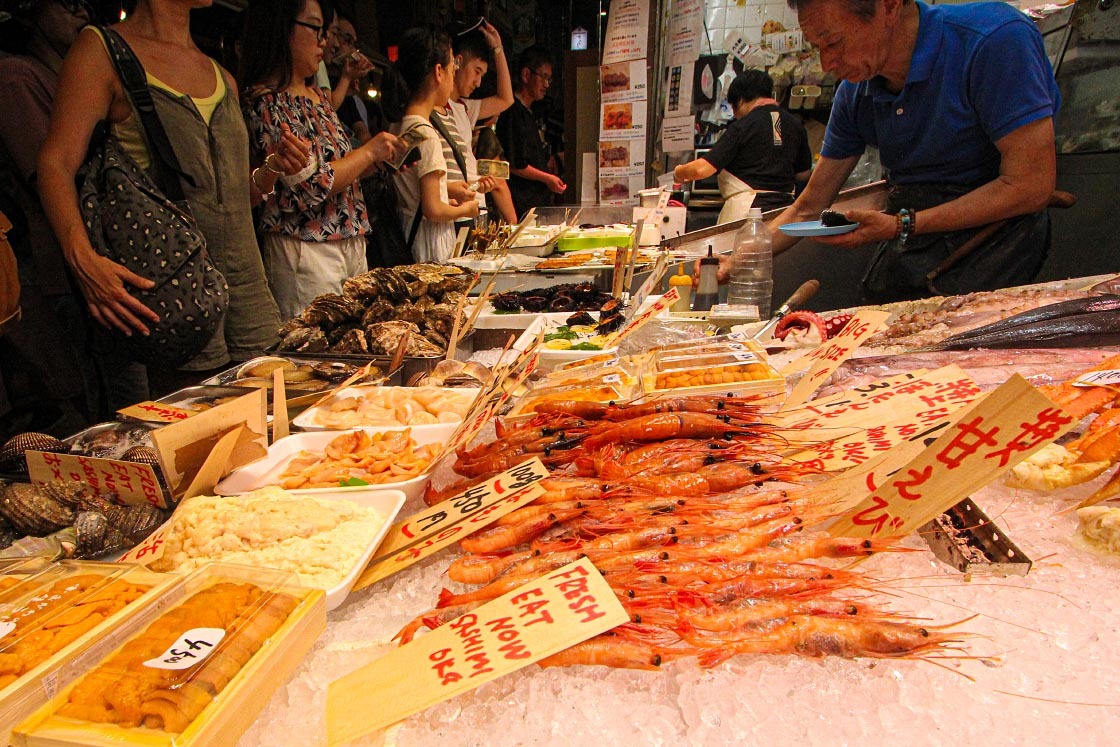
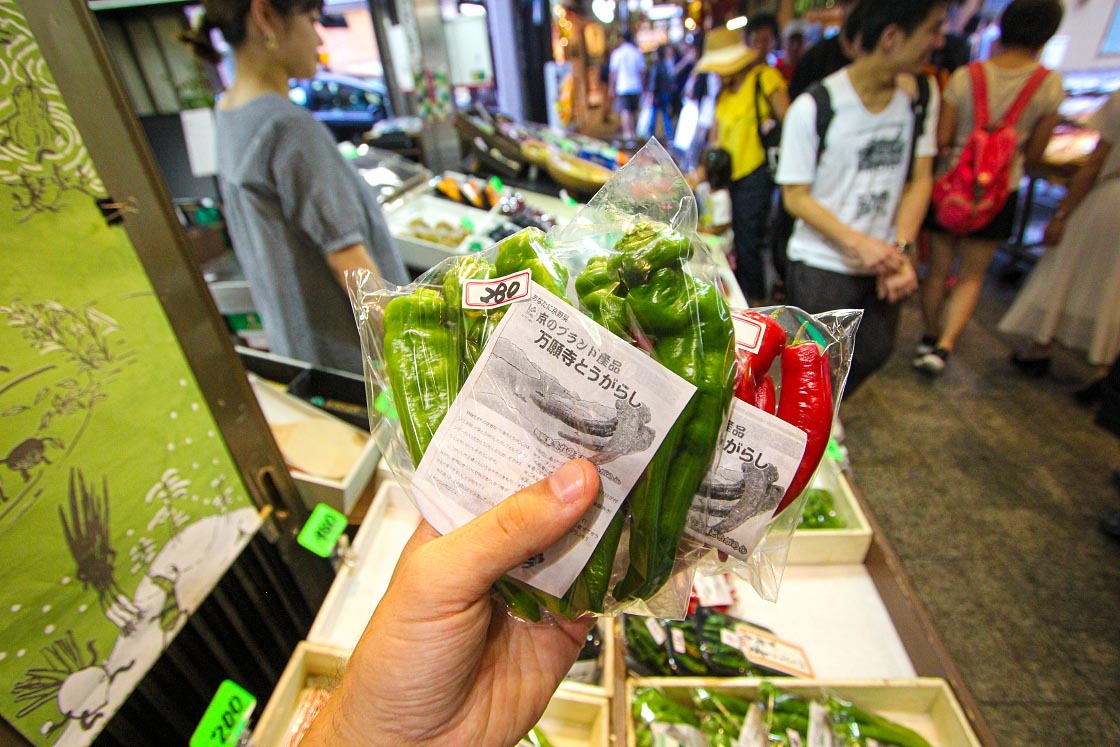
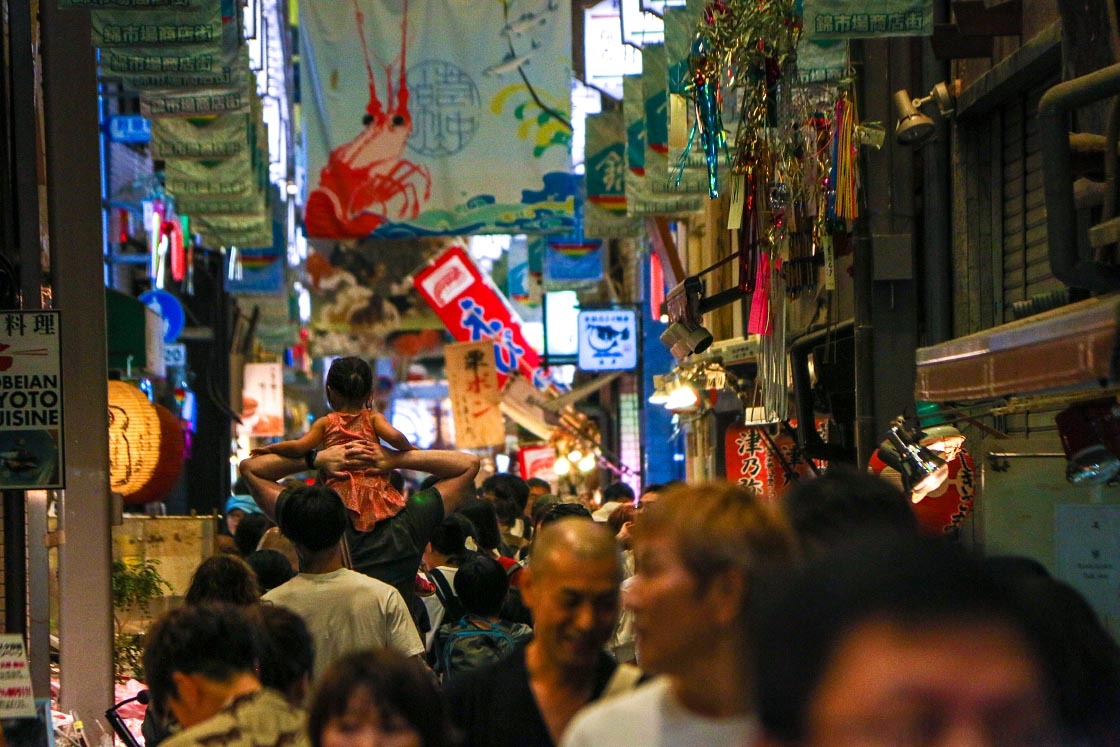
With my fresh dinner ingredients in tow (and after one more quick stop to a nearby grocery store for remaining ingredients), I made my way over to my hotel for the night: MIMARU KYOTO NISHINOTOIN TAKATSUJI.
MIMARU hotels offer a variety of room styles for travelers who want a more home-like stay while traveling. Compared to many hotels in Kyoto, MIMARU offers rather spacious rooms. Their standard room size sleeps four, but their bigger rooms comfortably accommodate larger groups for short or extended stays. Most rooms also include doorways that can connect adjacent rooms, convenient for people traveling in multiple groups.
Located less than a ten-minute walk from centrally located Shijo Station, it's also less than 30 minutes on foot from Kyoto Station and all of the sites I visited on this trip.
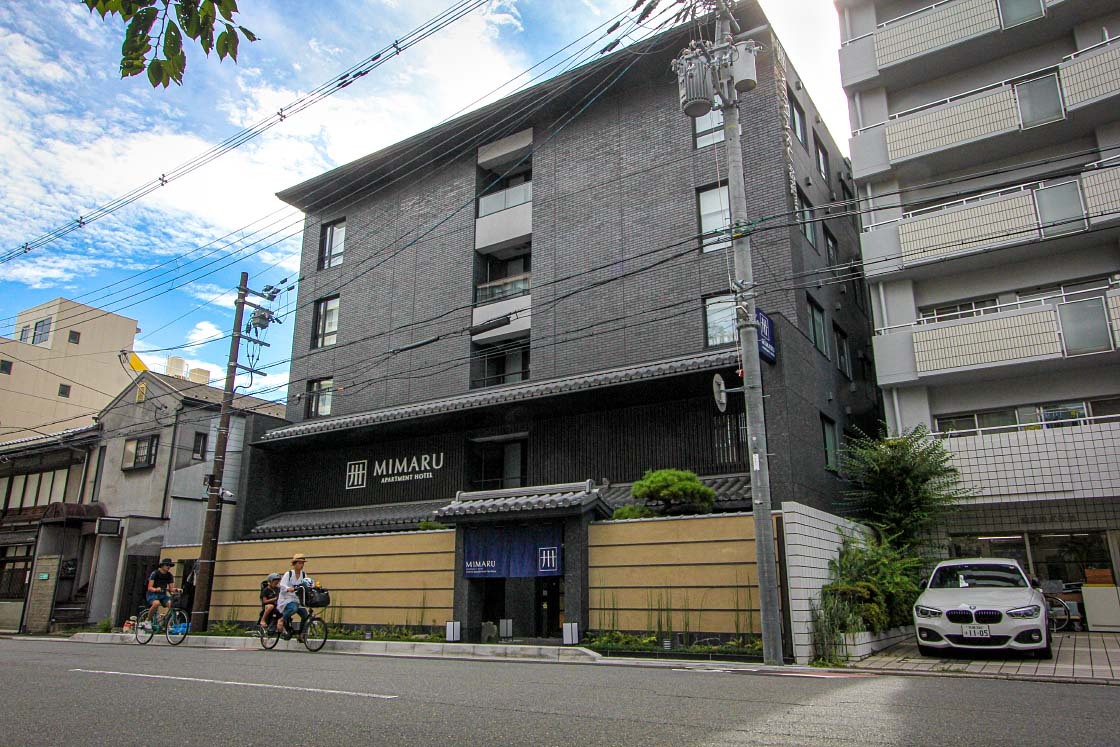
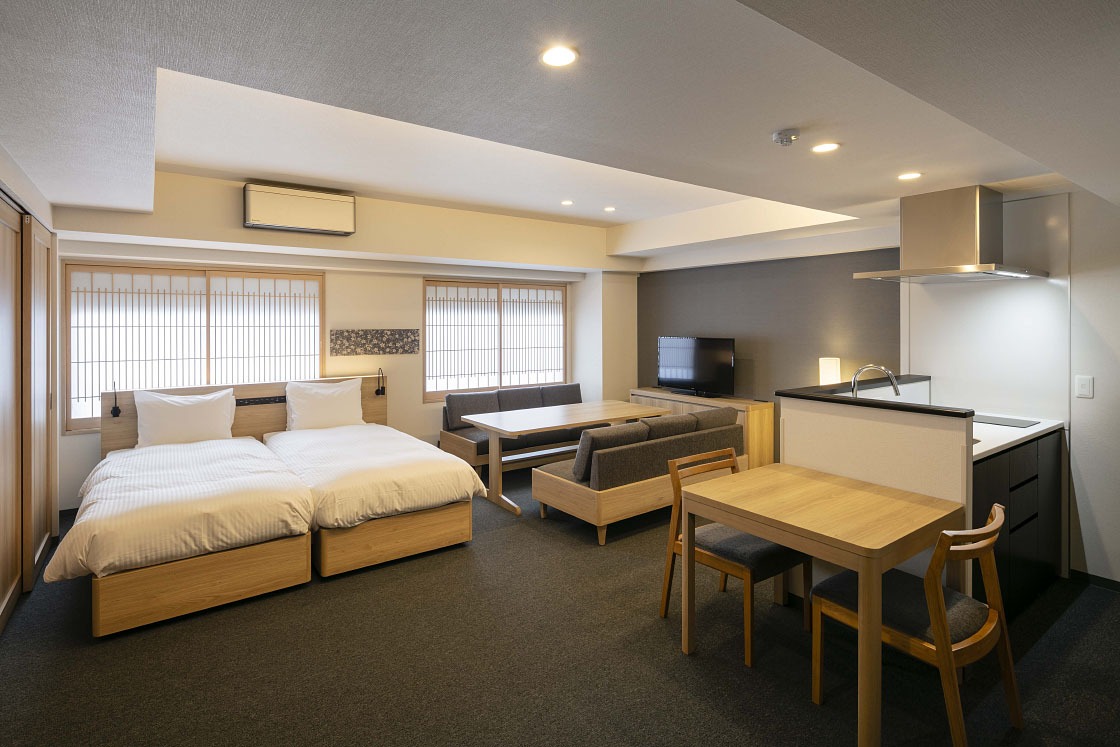
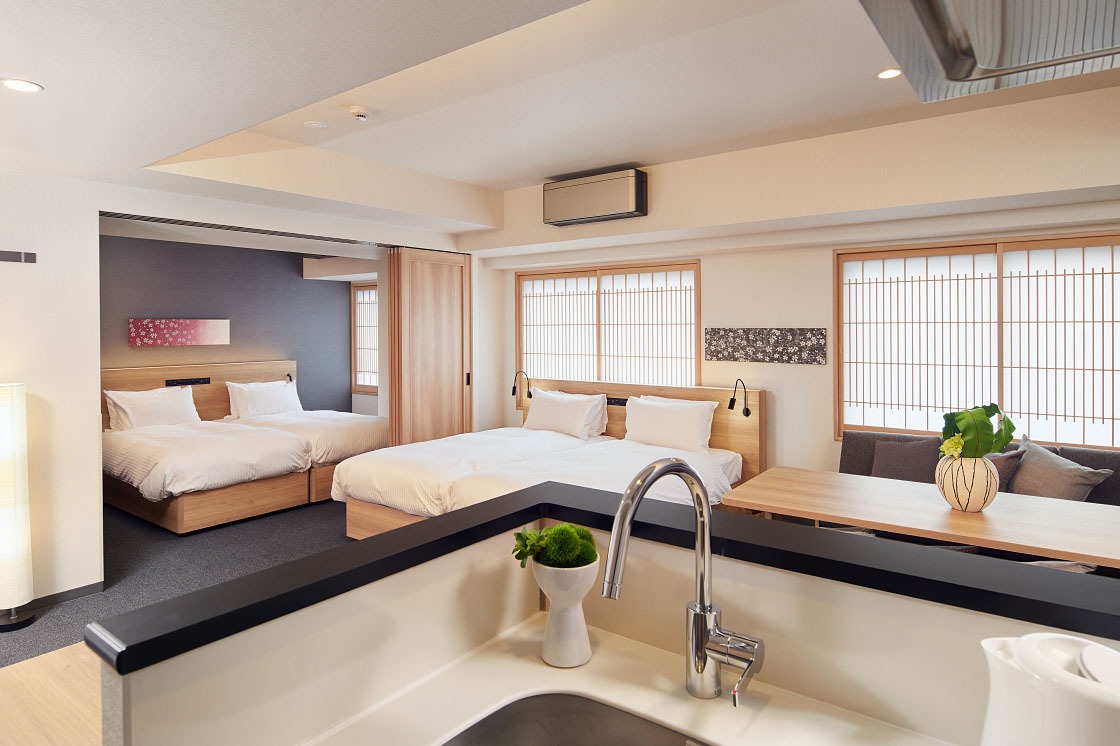


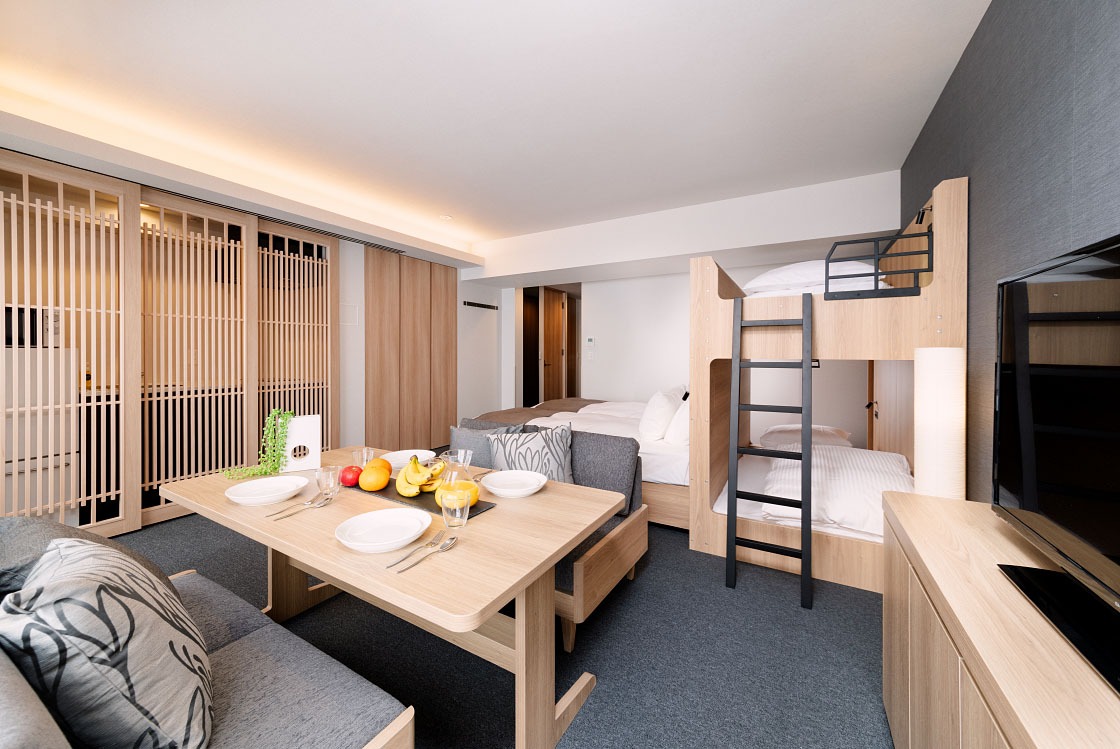
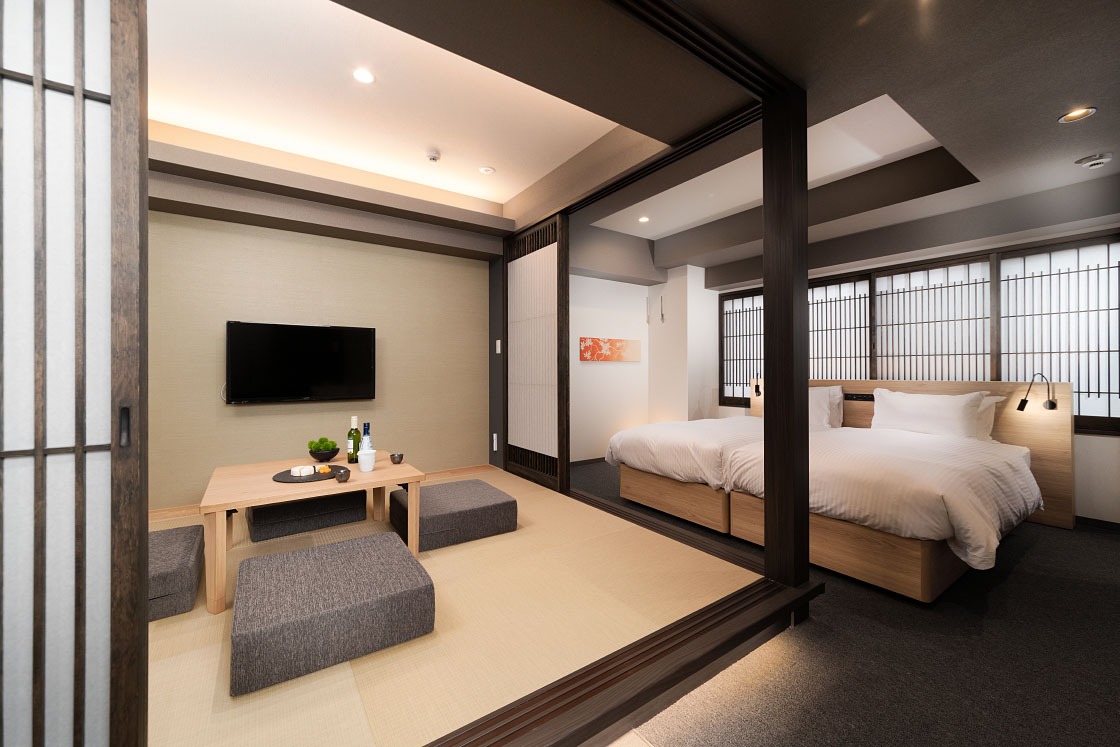
Of particular interest to me, each room comes equipped with a small kitchen and table, stocked with cooking utensils. After my shopping trip, I was excited to lay out my finds and get cooking!
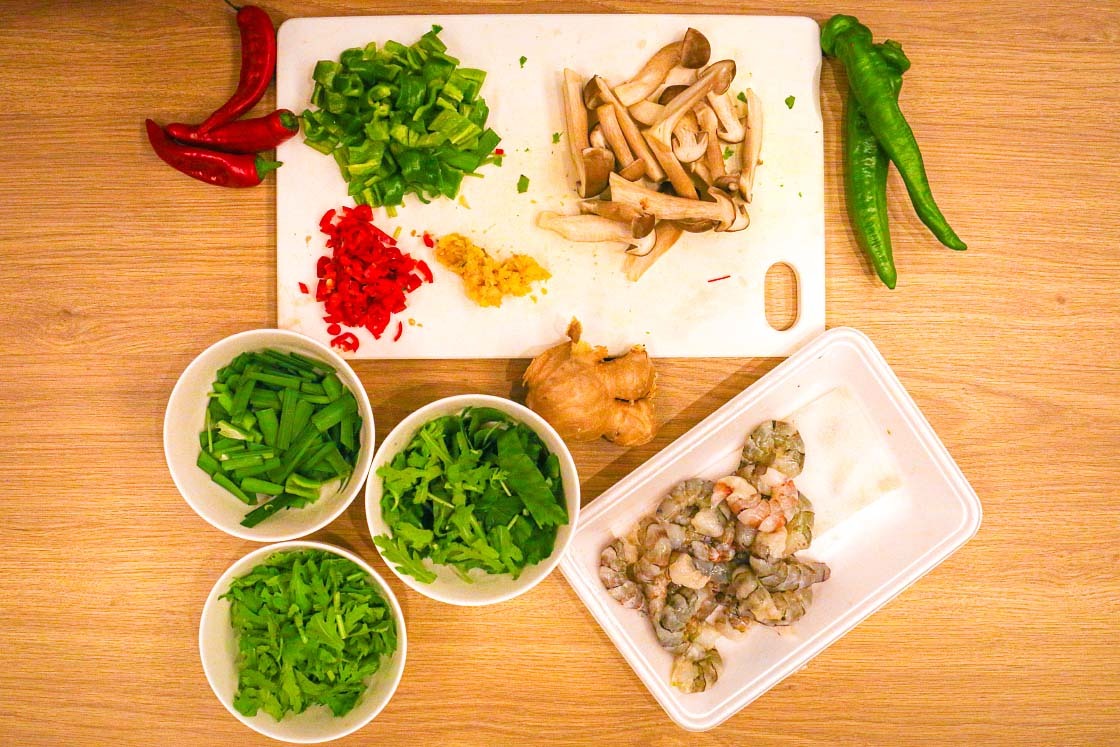
And after hitting the stove, I was satisfied with my work!
The simple addition of having a kitchen is a great way to explore Kyoto's cuisine culture for yourself, or to try out some newly-acquired skills from a local cooking class.
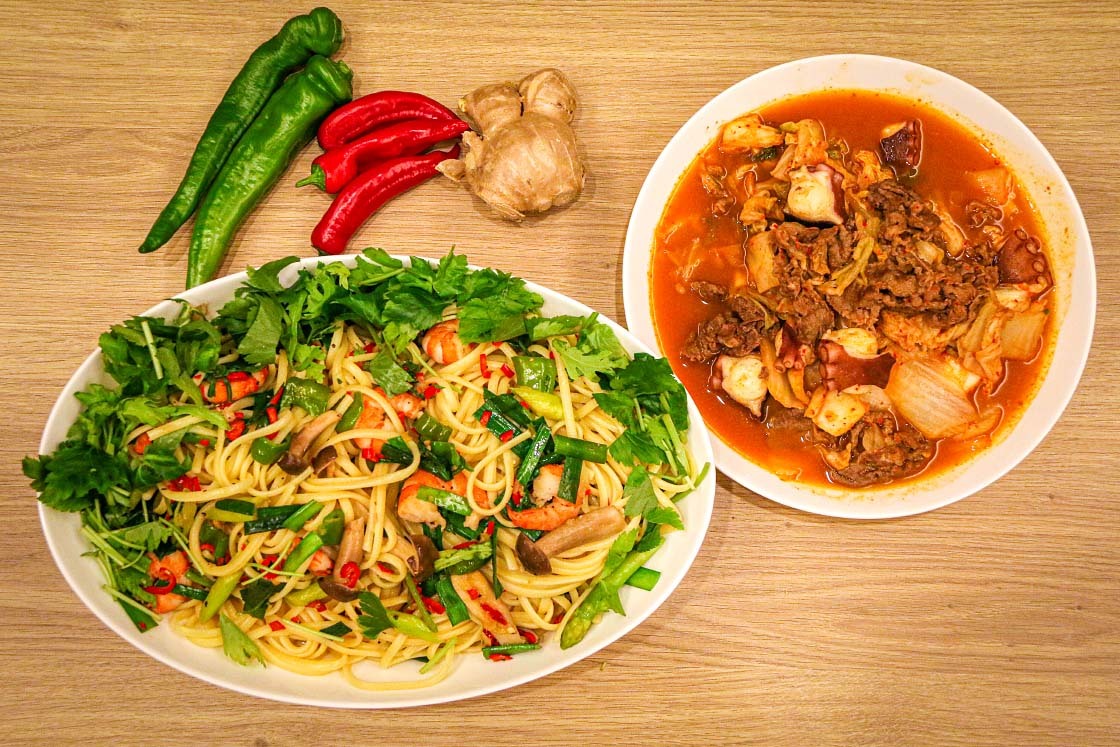
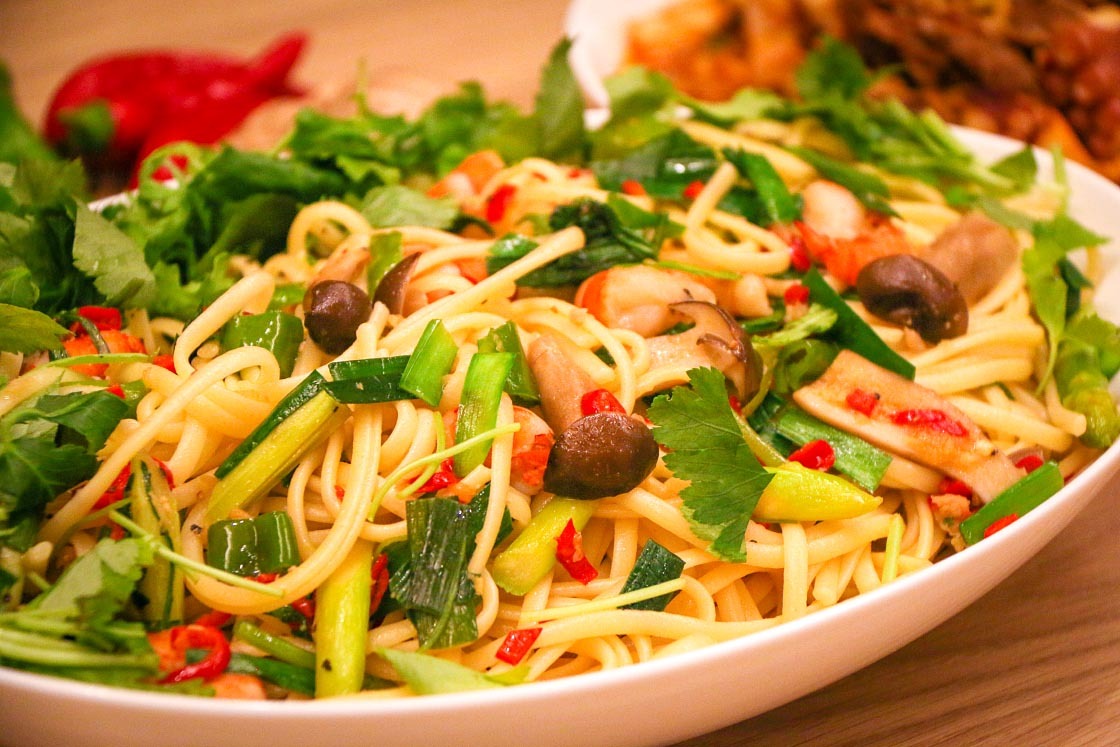
Day 2
Nijo Castle
After making myself a lovely (if I say so myself) Kyoto veggie leftover egg scramble for breakfast, I set out the next morning to enjoy a few of Kyoto's sites within easy reach of MIMARU.
Just a 20-minute walk north from the hotel, my first stop for the day was to the exquisite Nijo Castle (Nijojo). Nijojo was built in 1603 as the palatial residence of Japan's first Tokugawa shogun, Tokugawa Ieyasu. The incredibly well-preserved palace has survived over 400 years offering a colorful window into the lifestyle of Edo Period culture at its height.
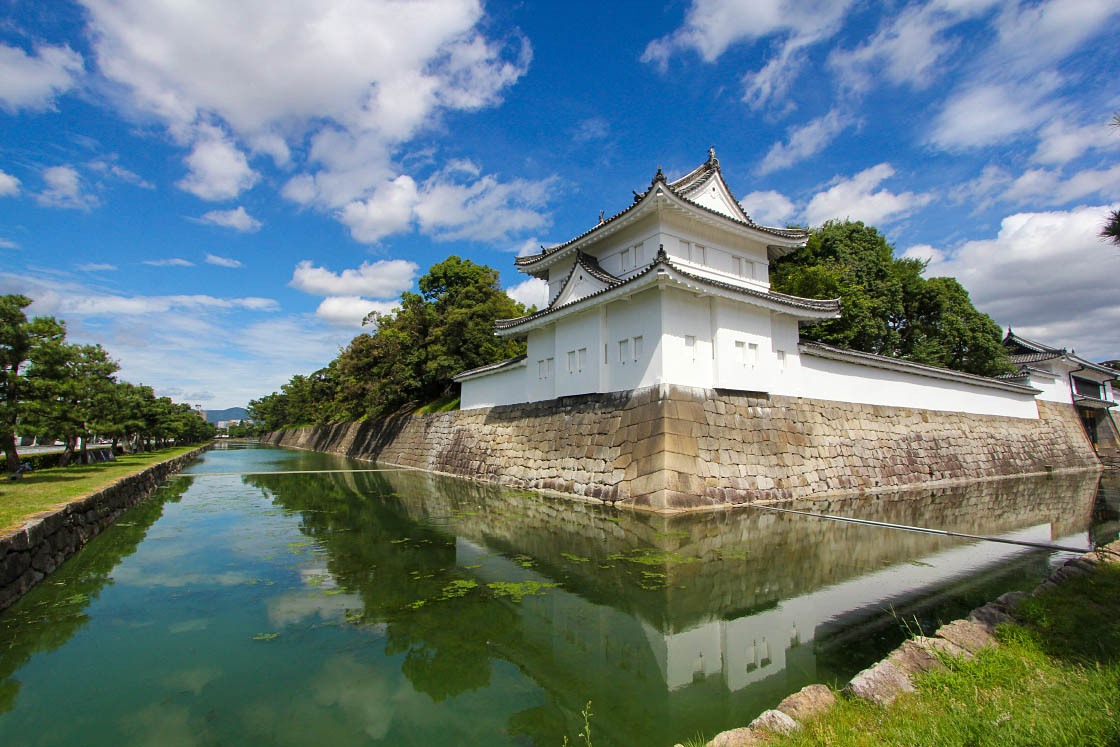
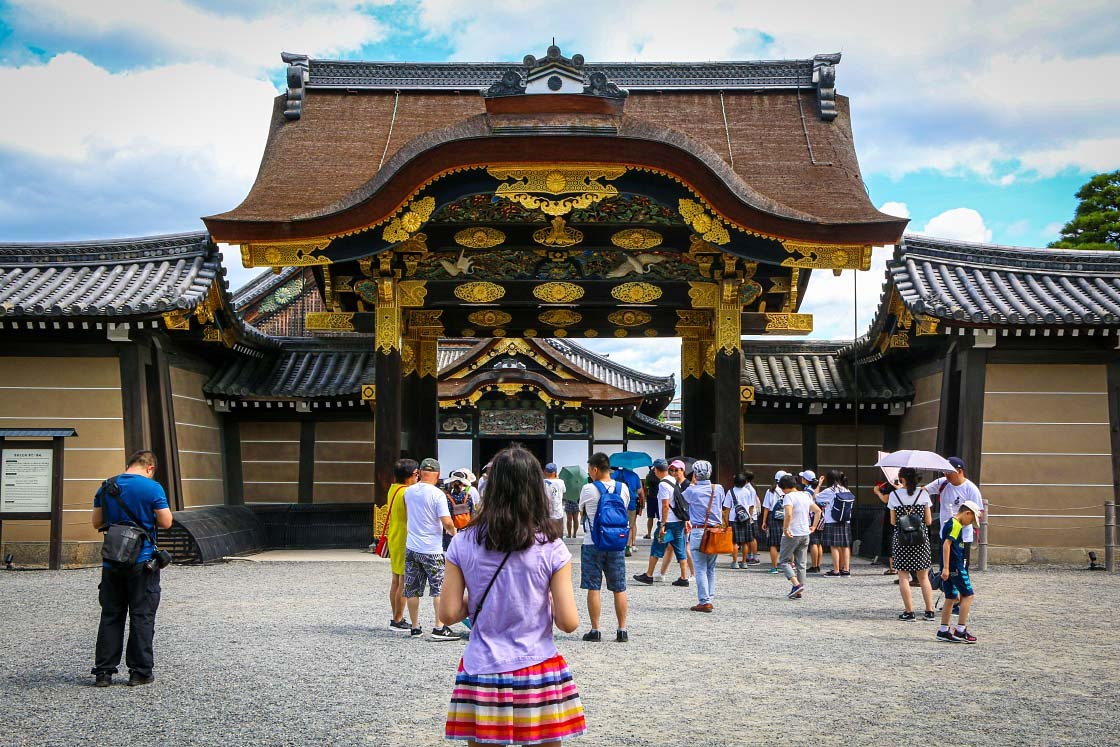
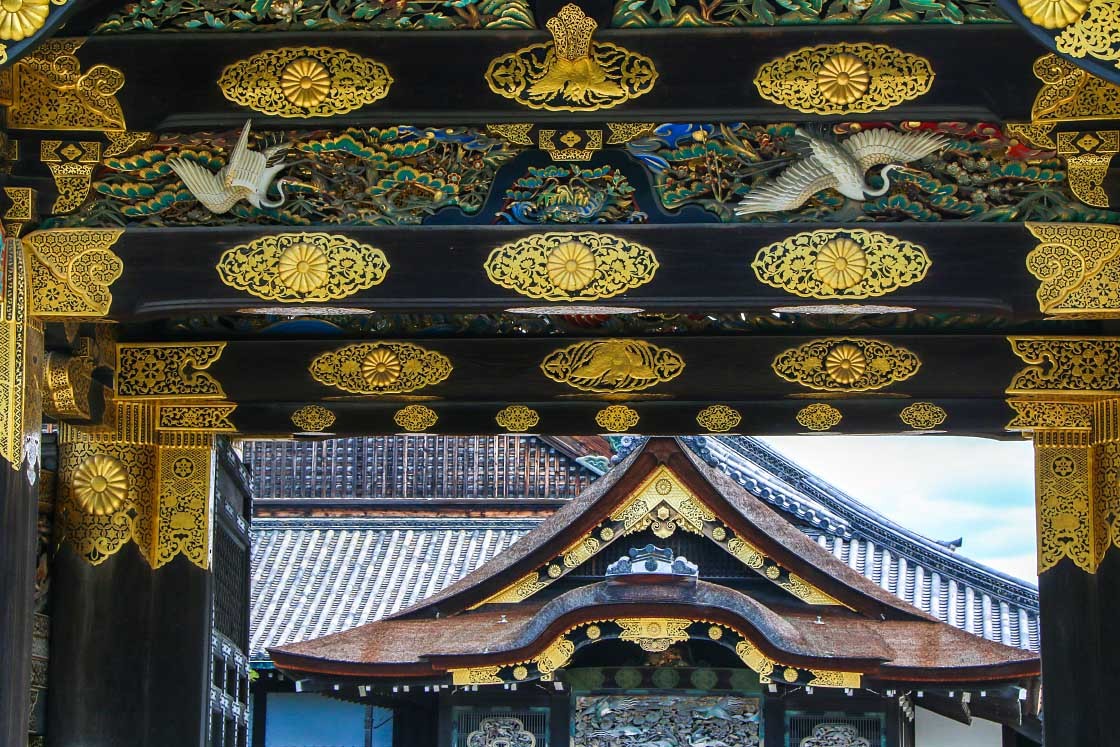

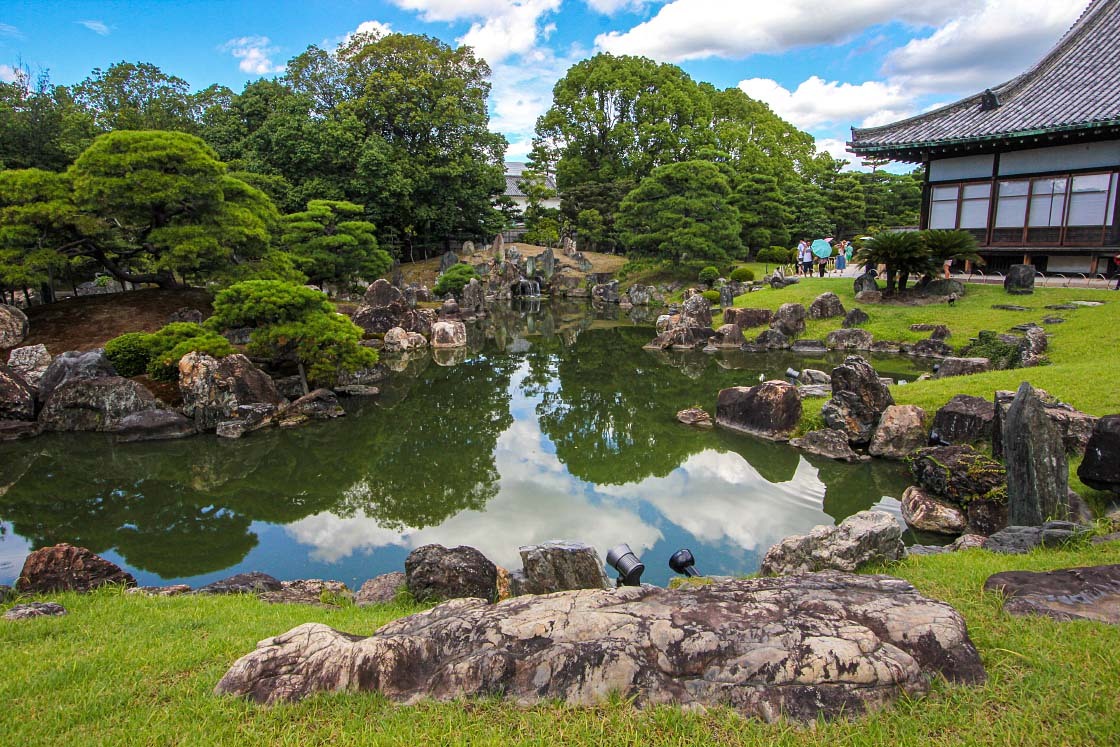
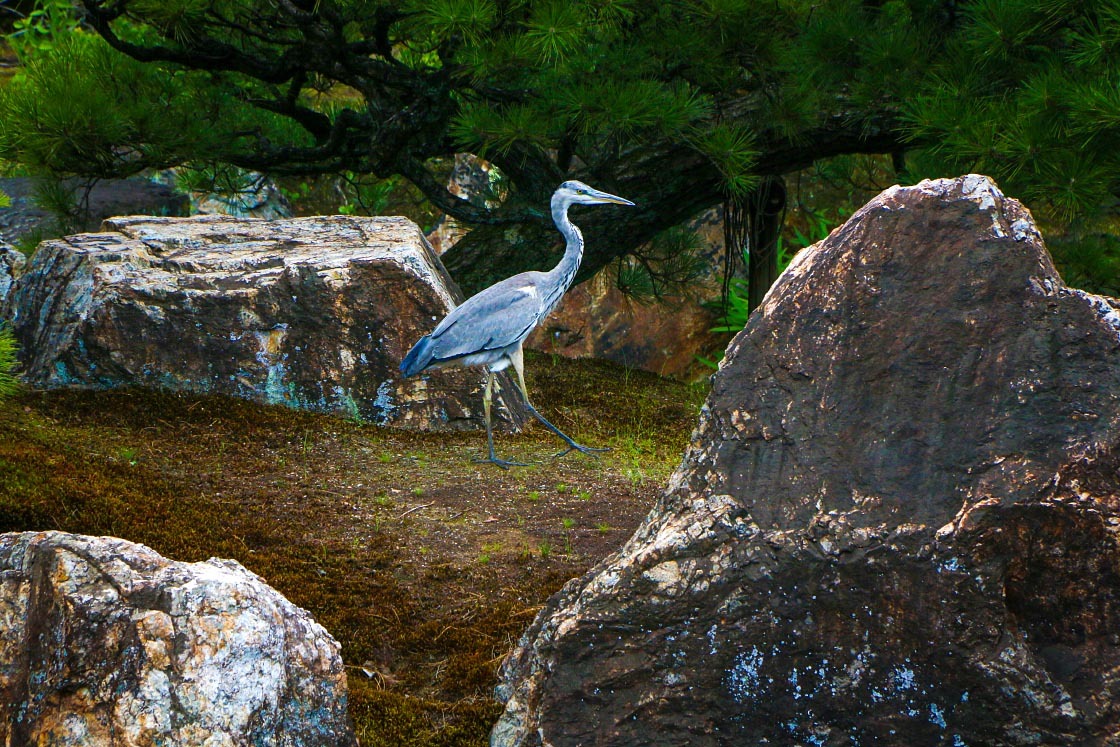
Walking along the Kamogawa River
From Nijo Castle, I made my way east until reaching the banks of central Kyoto's main river, the Kamogawa. The riverside and the surrounding neighborhoods make for some pleasant strolling, which fit nicely with my trip's theme.
Hitting the river I turned south, weaving between the riverside and the atmospheric Pontocho neighborhood lined with tiny bars and restaurants that come to life at night. It was particularly hot this day, so I decided to take a quick detour to a small coffee shop by the name Traveling Coffee, which used to be located in an abandoned elementary school. They've since had to relocate slightly but you can still enjoy a schoolhouse vibe over a book and a cold pour over coffee on a hot day.
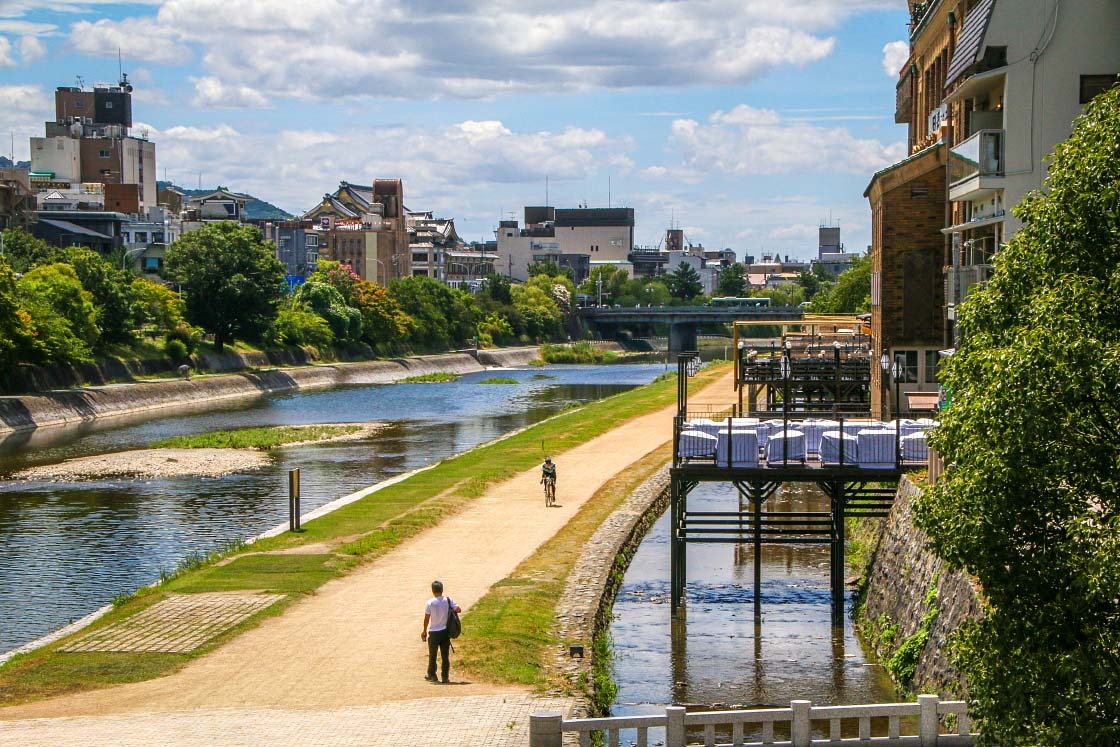

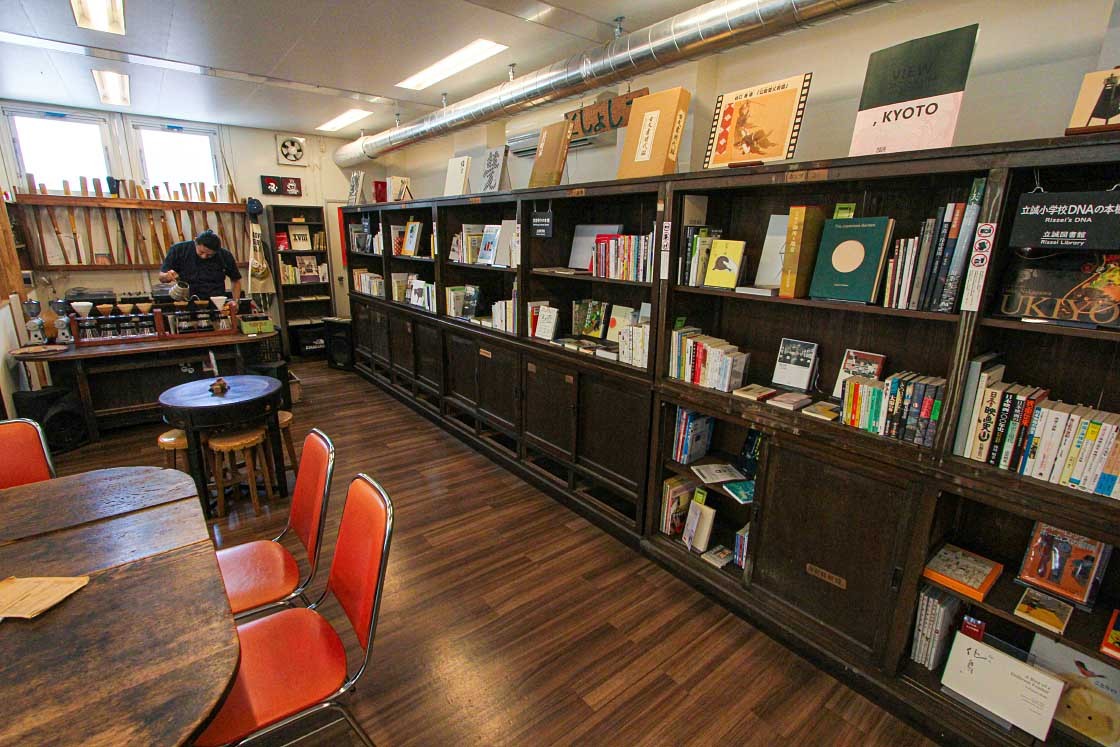
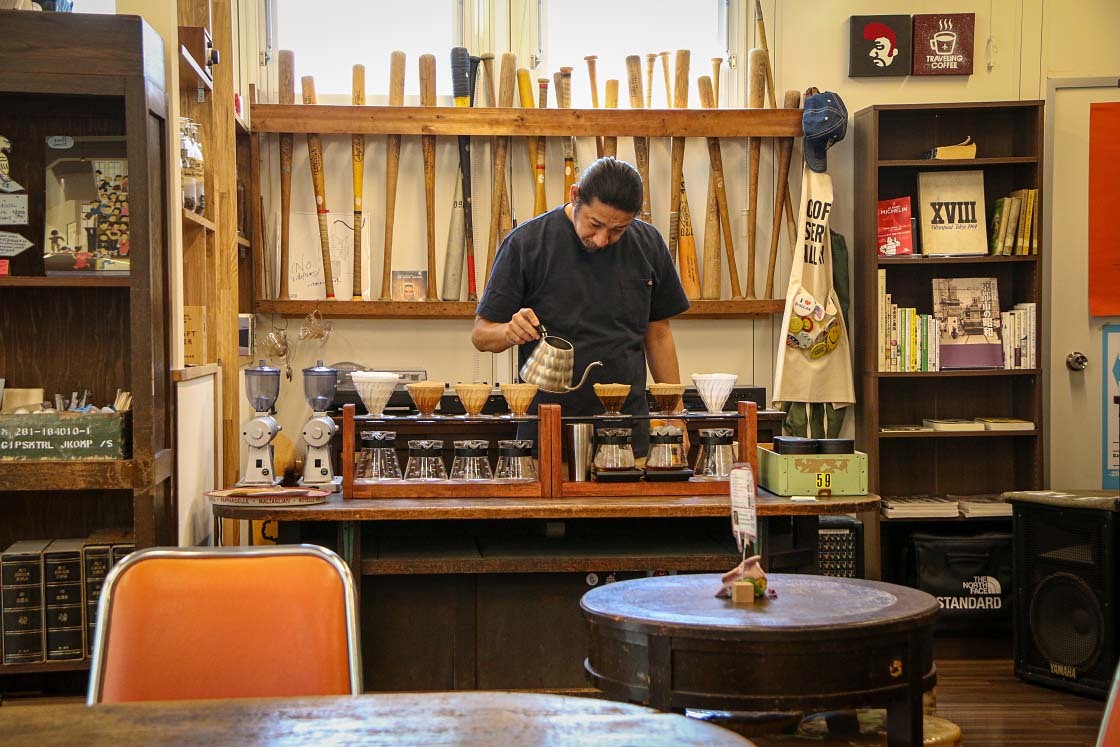
With a much-needed caffeine boost, I headed across the river to the traditional Gion neighborhood. One of Japan's few remaining active geisha districts, the scenic neighborhood is a great place to stroll amongst old wood-clad buildings and possibly even spot a geiko or maiko on their way to work.

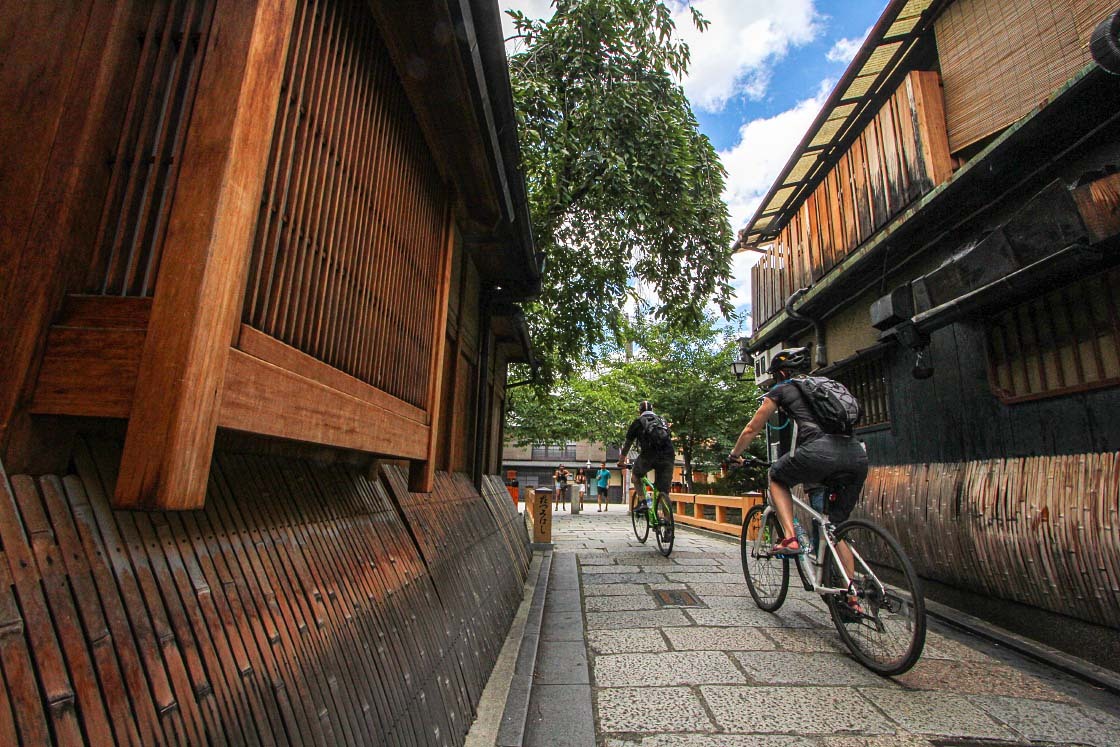
Kenninji Temple
My last sightseeing stop was to Kenninji Temple, located on the southern edge of the Gion area. This easily overlooked temple is actually among Kyoto's most important. Founded in 1202 by Eisai, the very Buddhist monk who introduced both Zen Buddhism and tea cultivation to Japan, the temple is considered the oldest Zen temple in Kyoto.
The temple grounds were a surprising treat to stroll around, with a large rock garden, several tucked-away courtyard gardens, and a large collection of ancient artwork to admire. Perhaps its most impressive piece of art is a mural of two interlocking dragons that consumes the ceiling of the temple's Dharma Hall which was commissioned in 2002 for the temple's 800th anniversary.
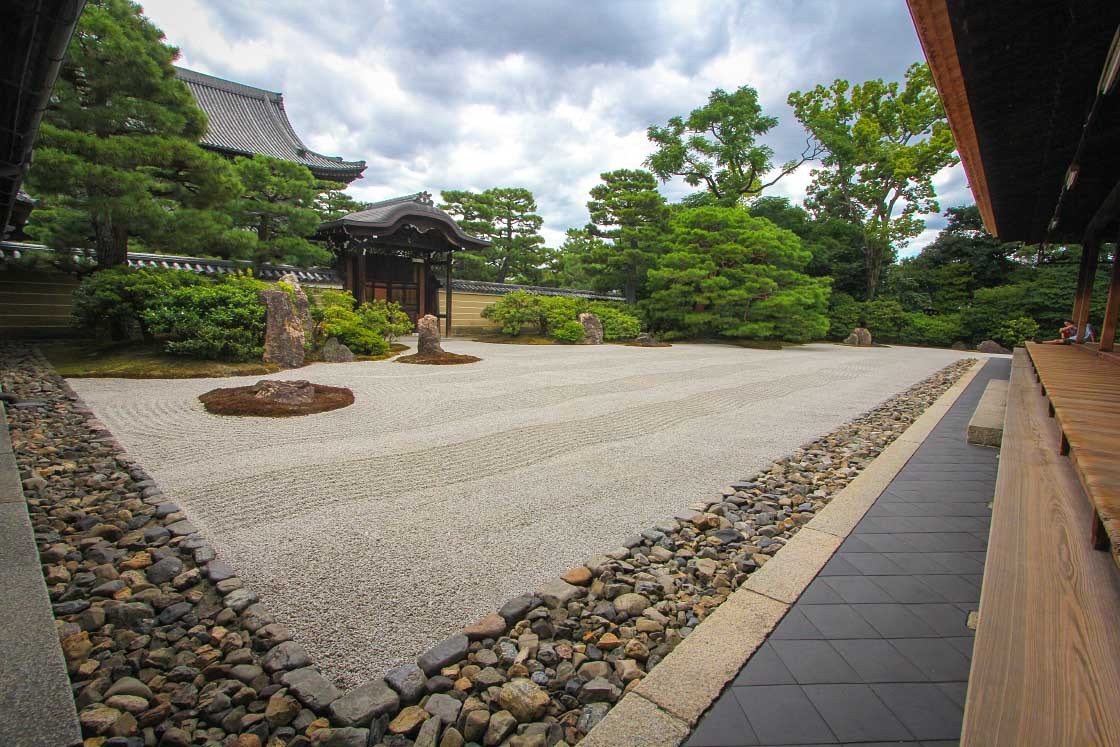
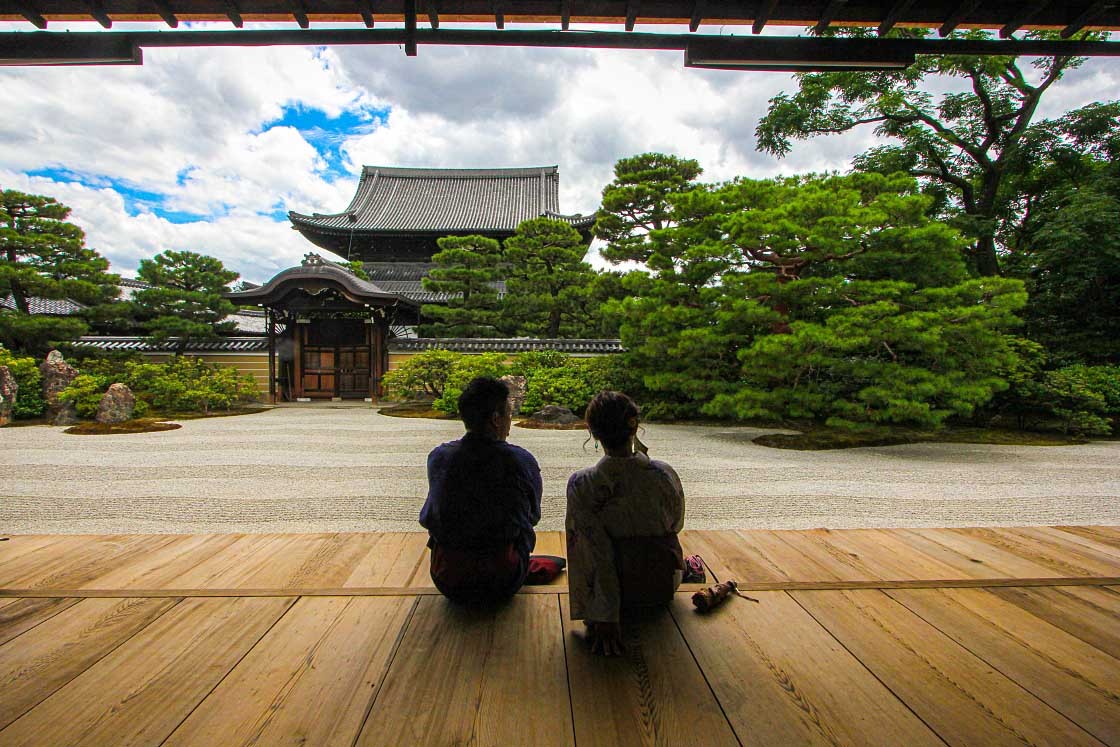
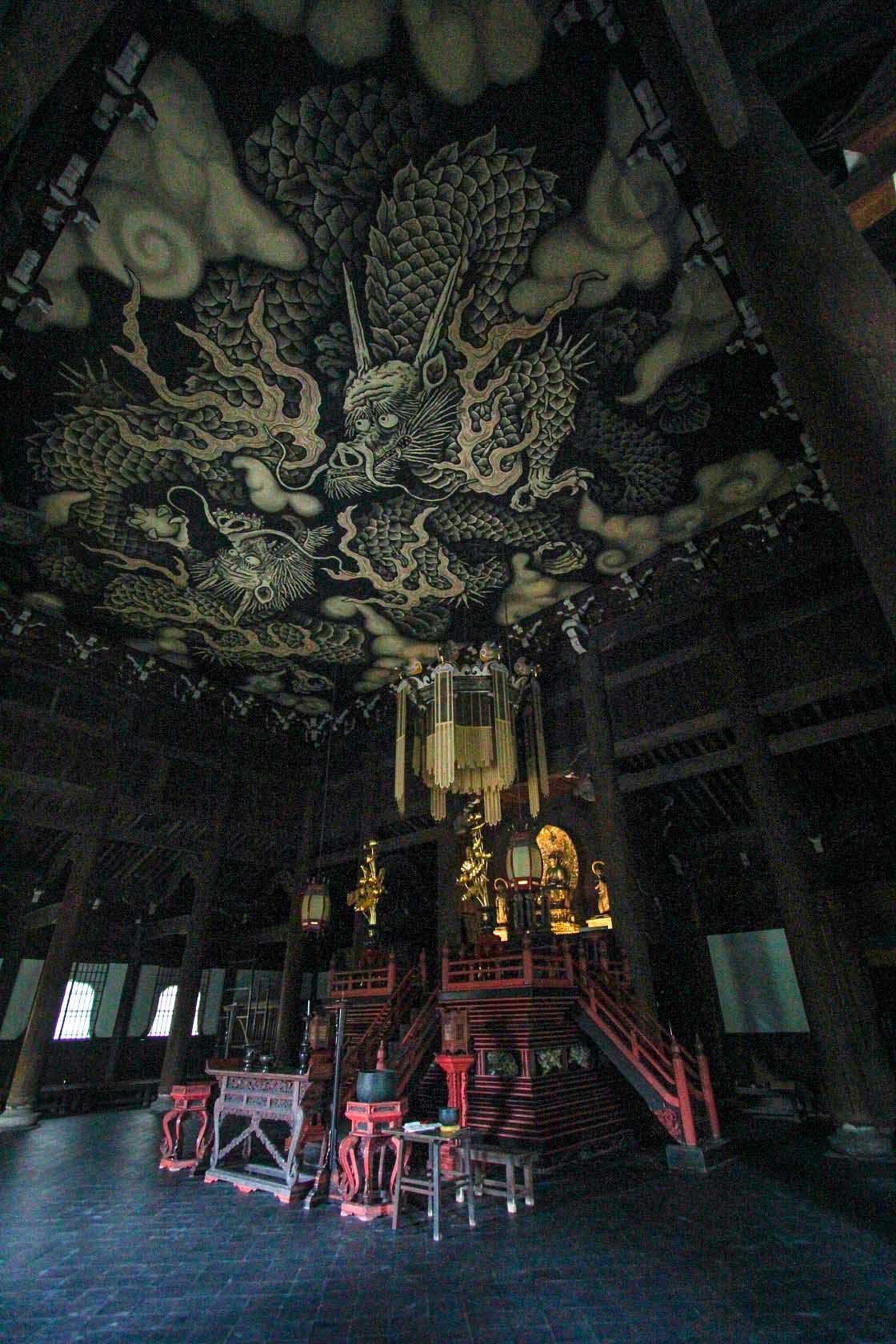
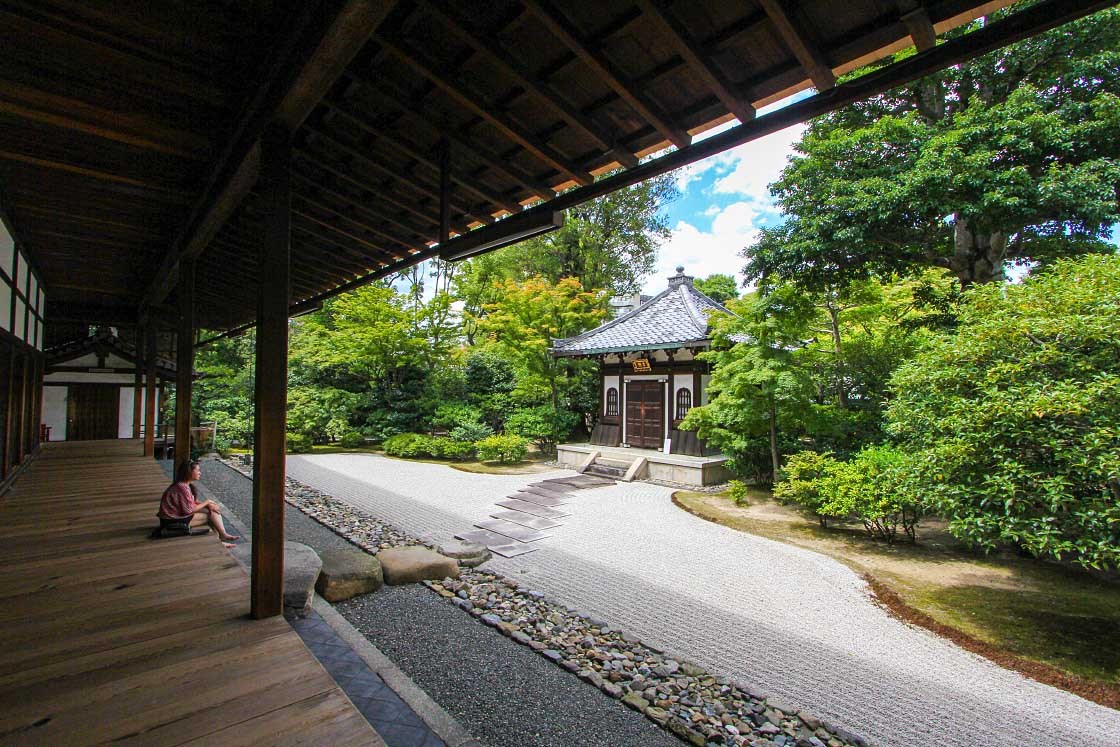

After a long day on my feet, I decided to end my whirlwind Kyoto trip with a bit of sushi. On recommendation from MIMARU that there were good eating options in the area, I headed back to the MIMARU I stayed at and found about a 10-minute walk away a stylish sushi restaurant by the name Souden. By chance, it was actually very close to another MIMARU hotel, their MIMARU KYOTO SHINMACHI SANJO location.
Souden specializes in intricately designed single-bite sushi and several varieties of green teas. The relaxed but hip atmosphere and delicious food and tea was a perfect end to a short but satisfying trip.



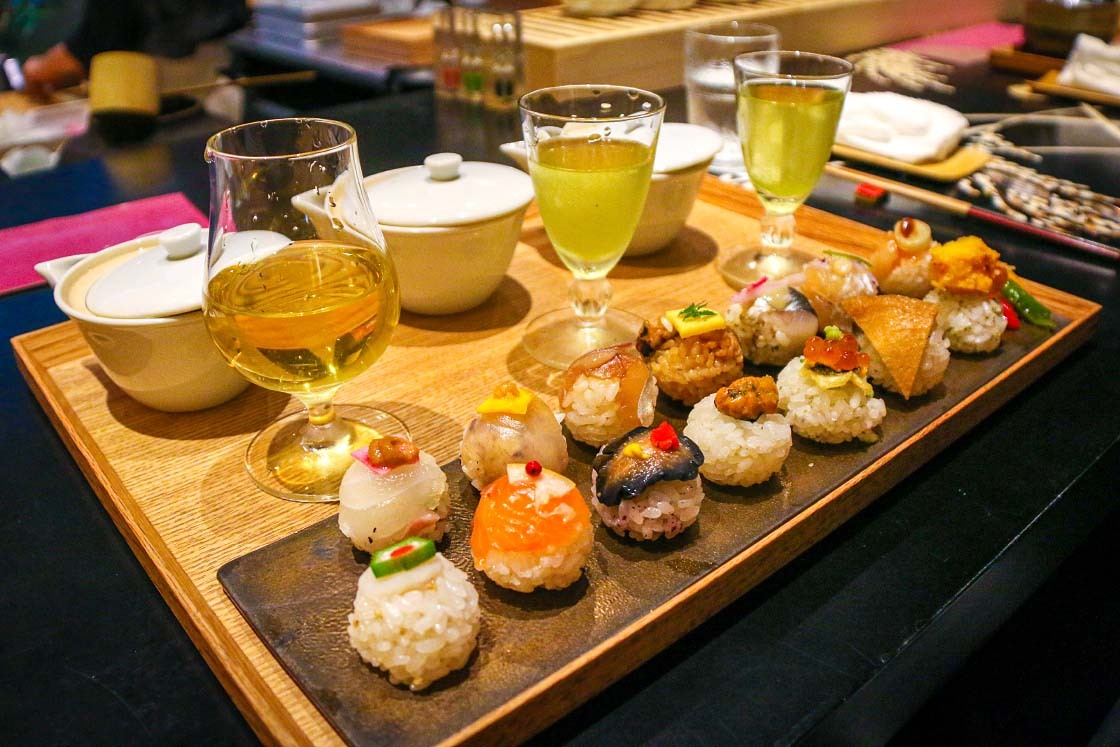
Staying at MIMARU
If you're planning a stay in Kyoto, MIMARU can be a good hotel choice for many different situations. In addition to the one I stayed at on my trip, there are five other APARTMENT HOTEL MIMARU locations around Kyoto, including ones even closer to some of the locations featured in this story.
MIMARU is currently offering an exclusive discount for Japan Guide readers. Book a reservation on MIMARU's official website using the promotion code guidej_mimaru and receive a discounted price on your booking!*
* Canceling 7 days or fewer before the day of your reservation will result in a 100% cancellation fee.
* No-shows will be charged in full.
* Applicable until August 31, 2020 (application period may be extended).


